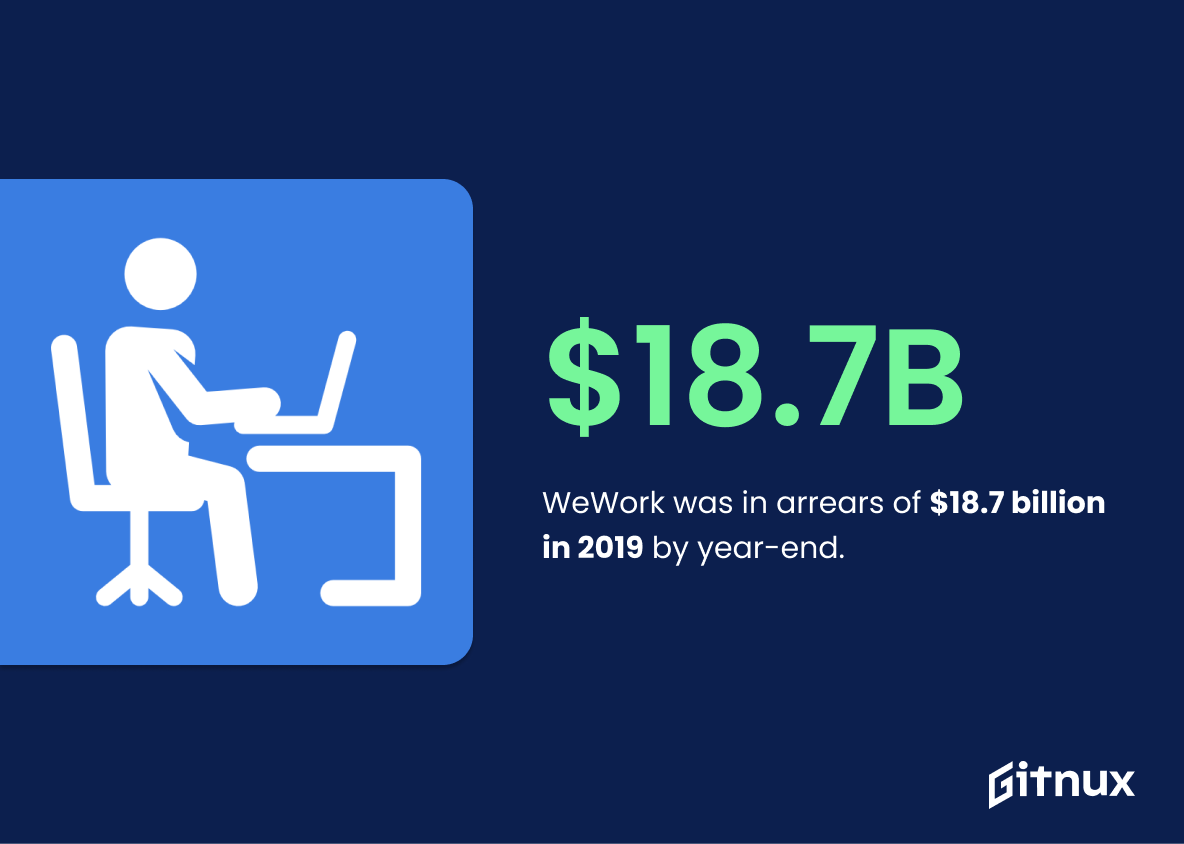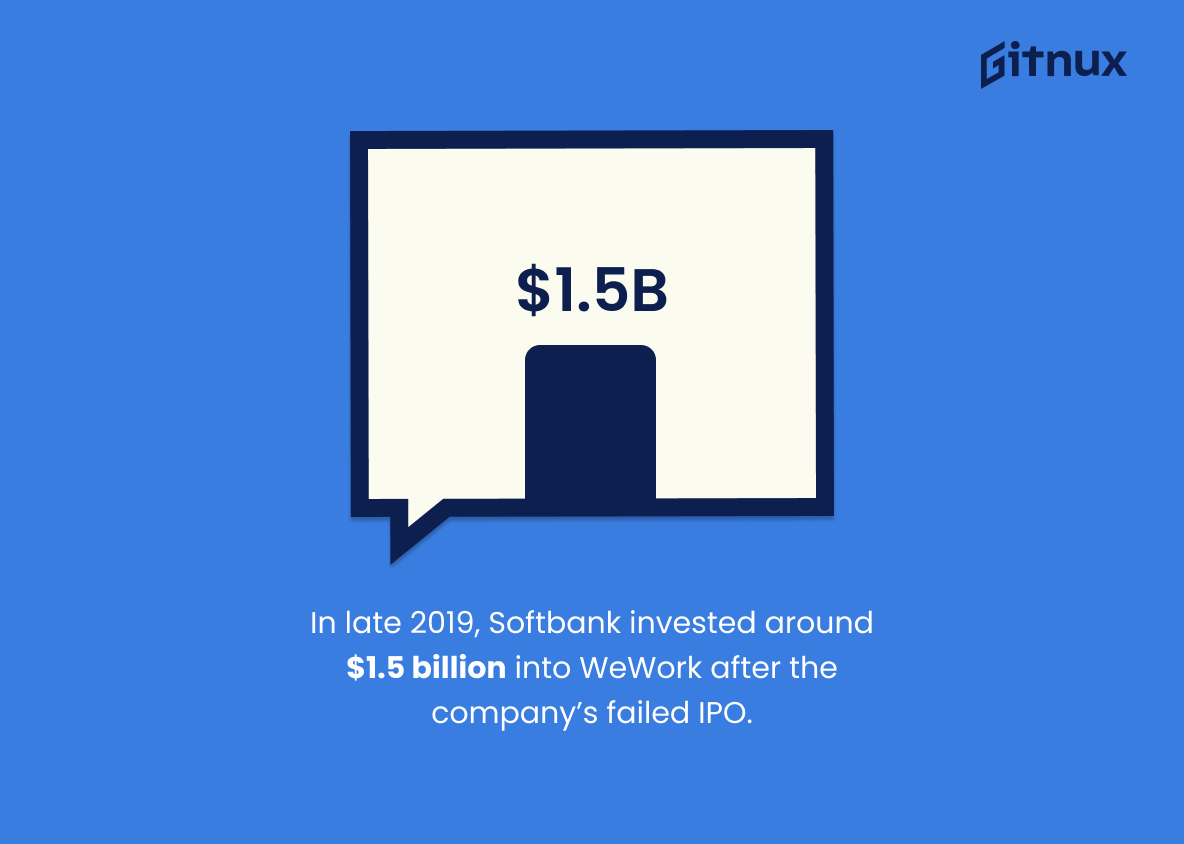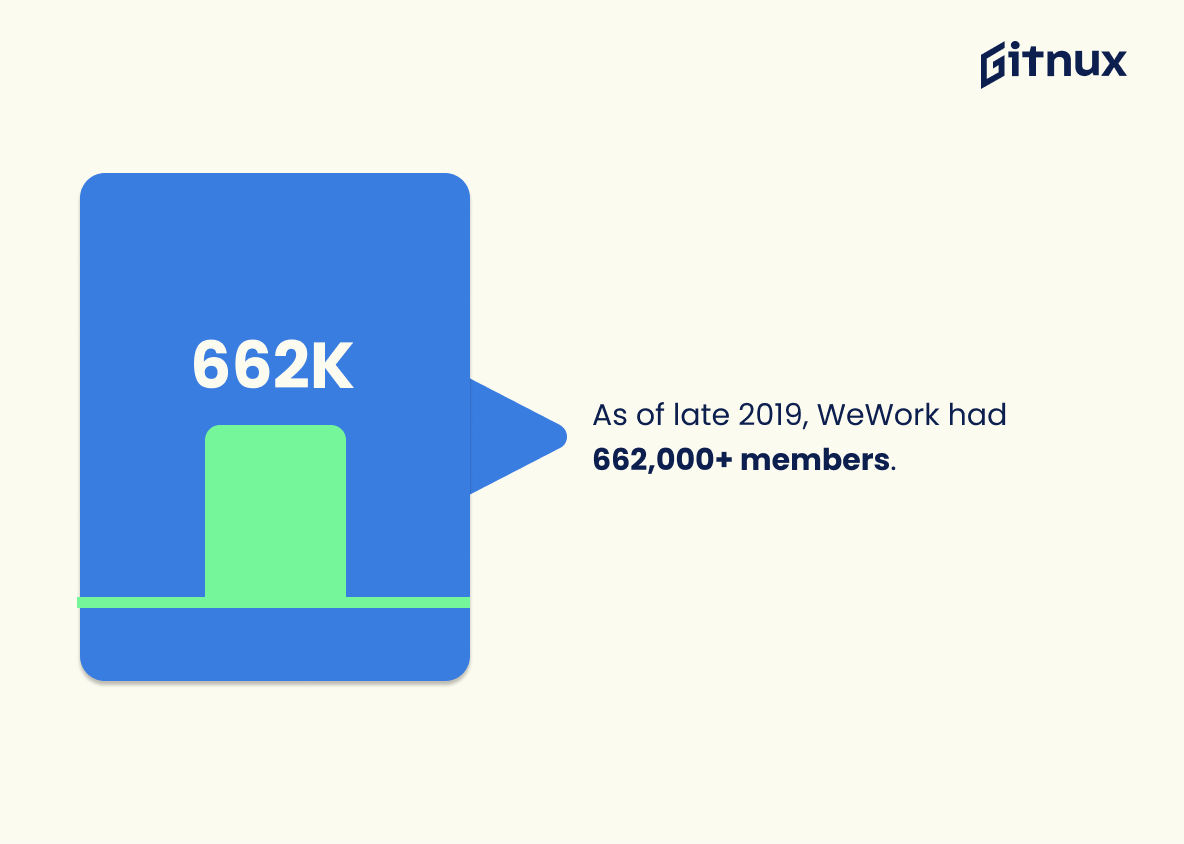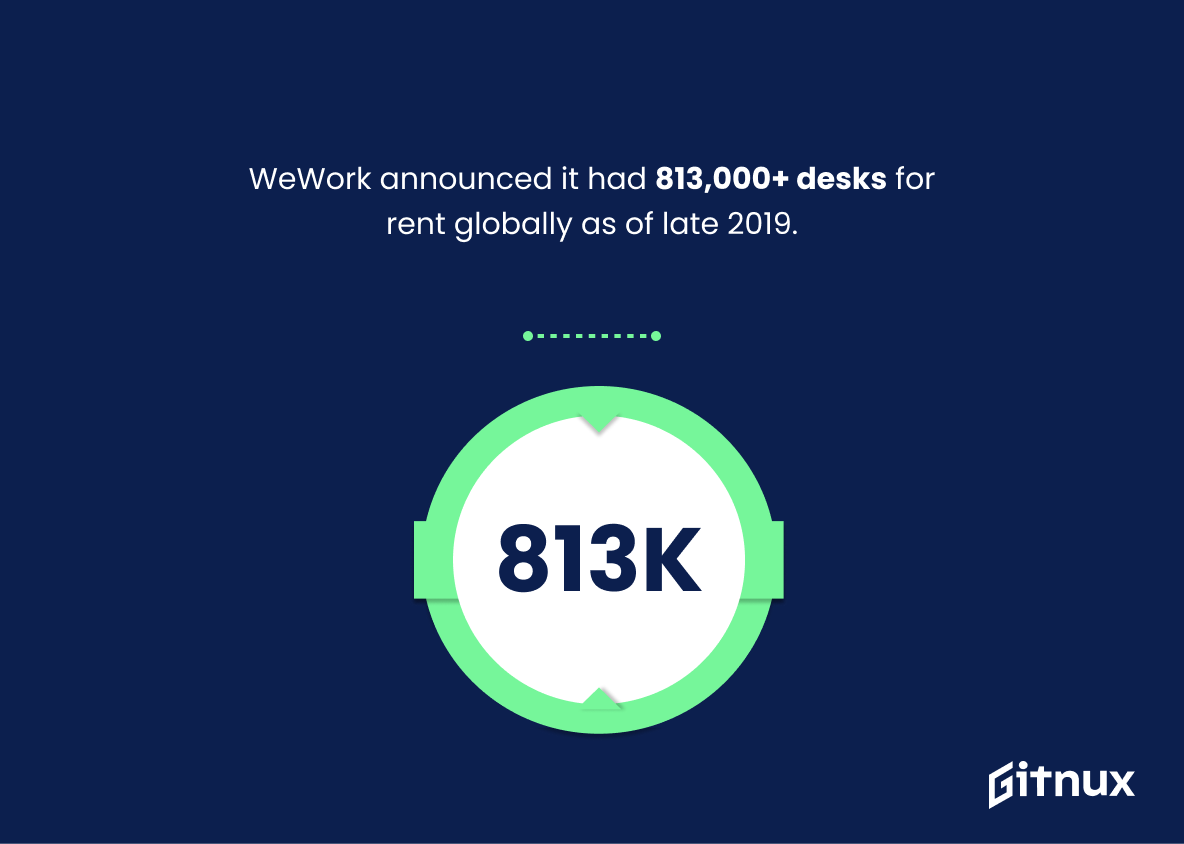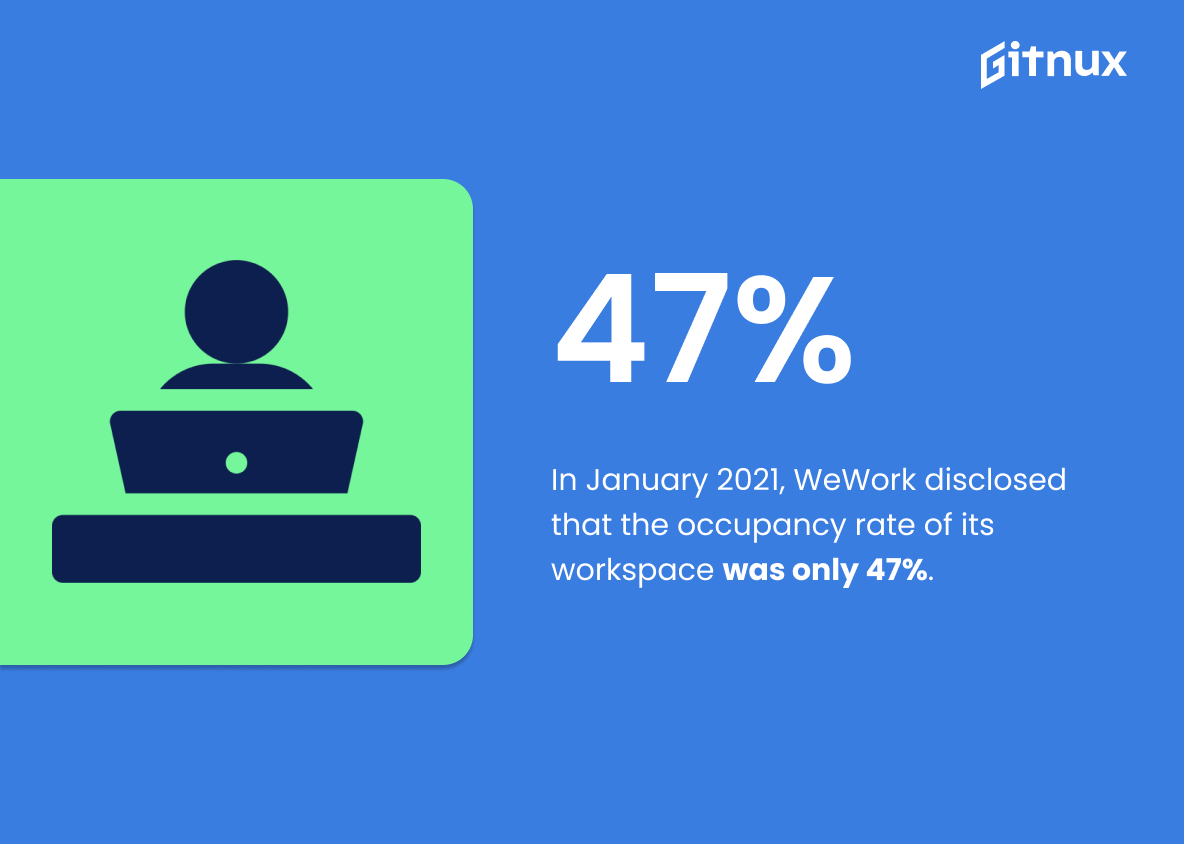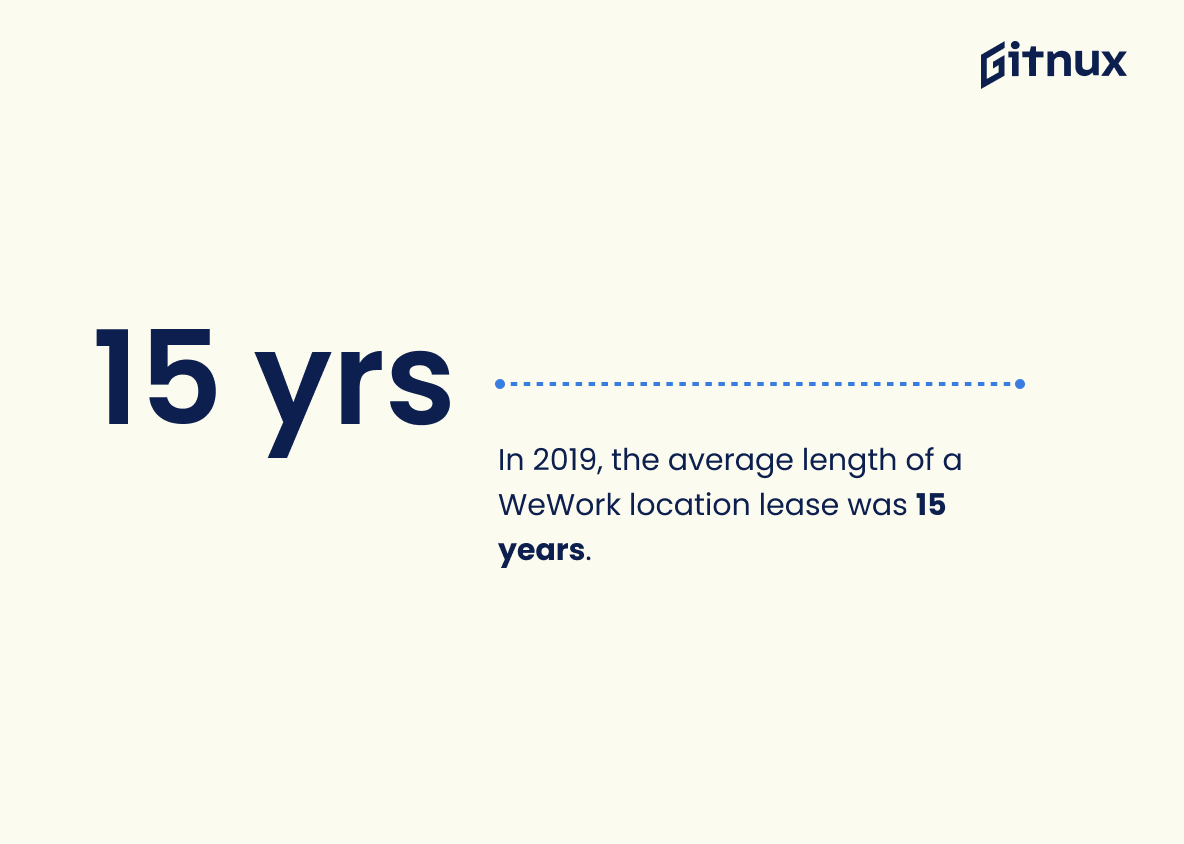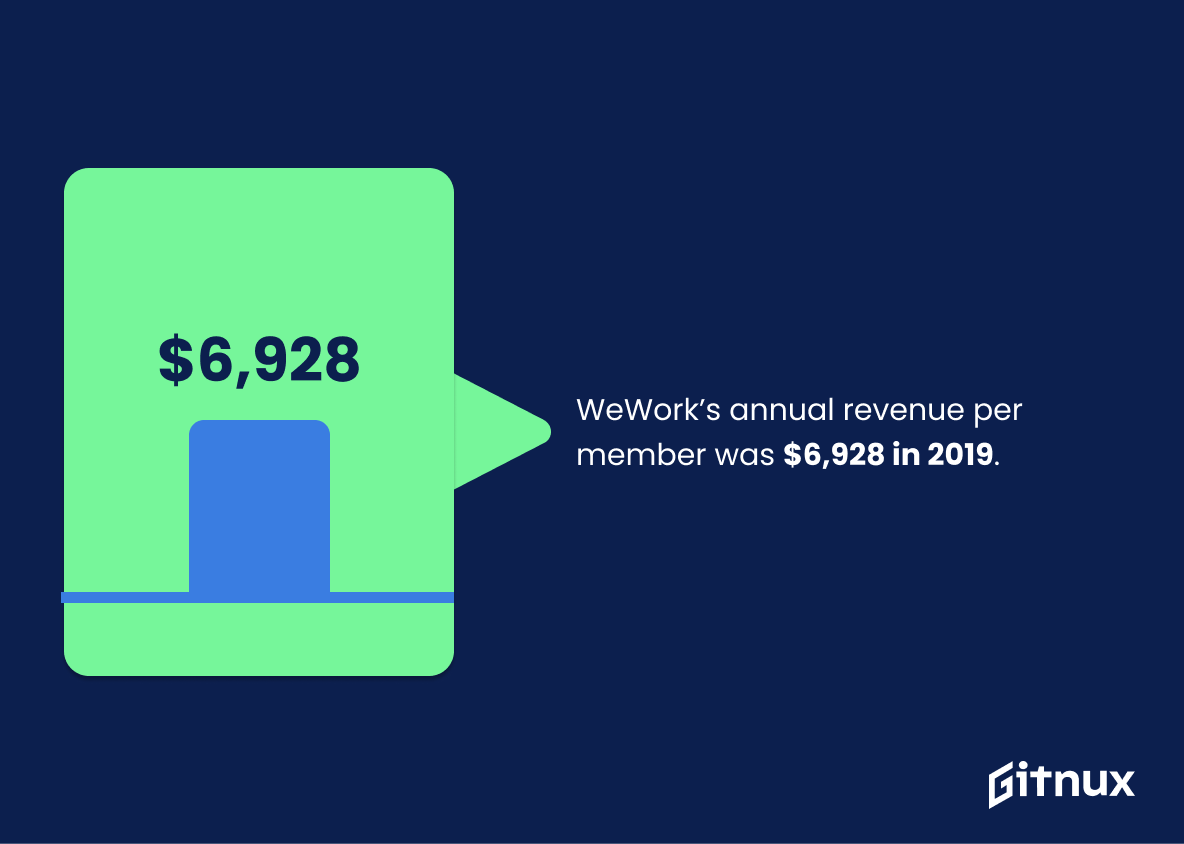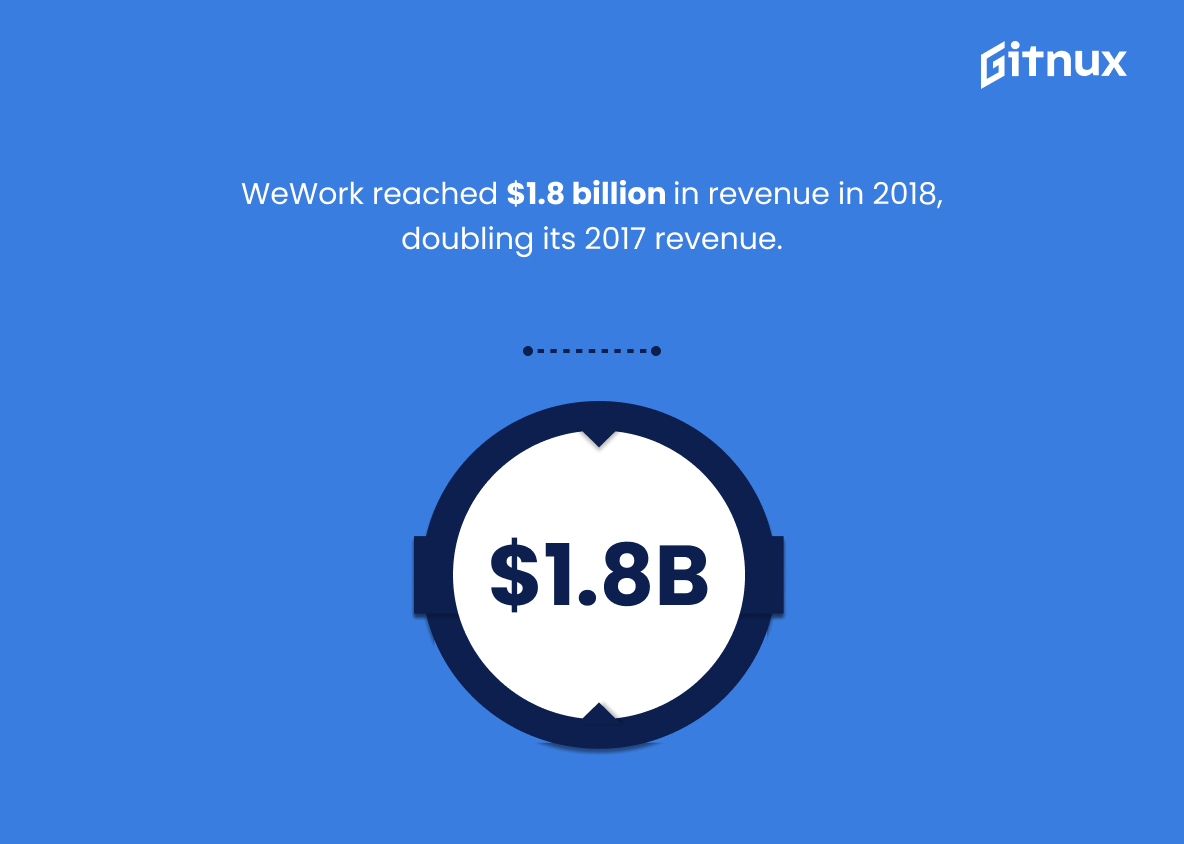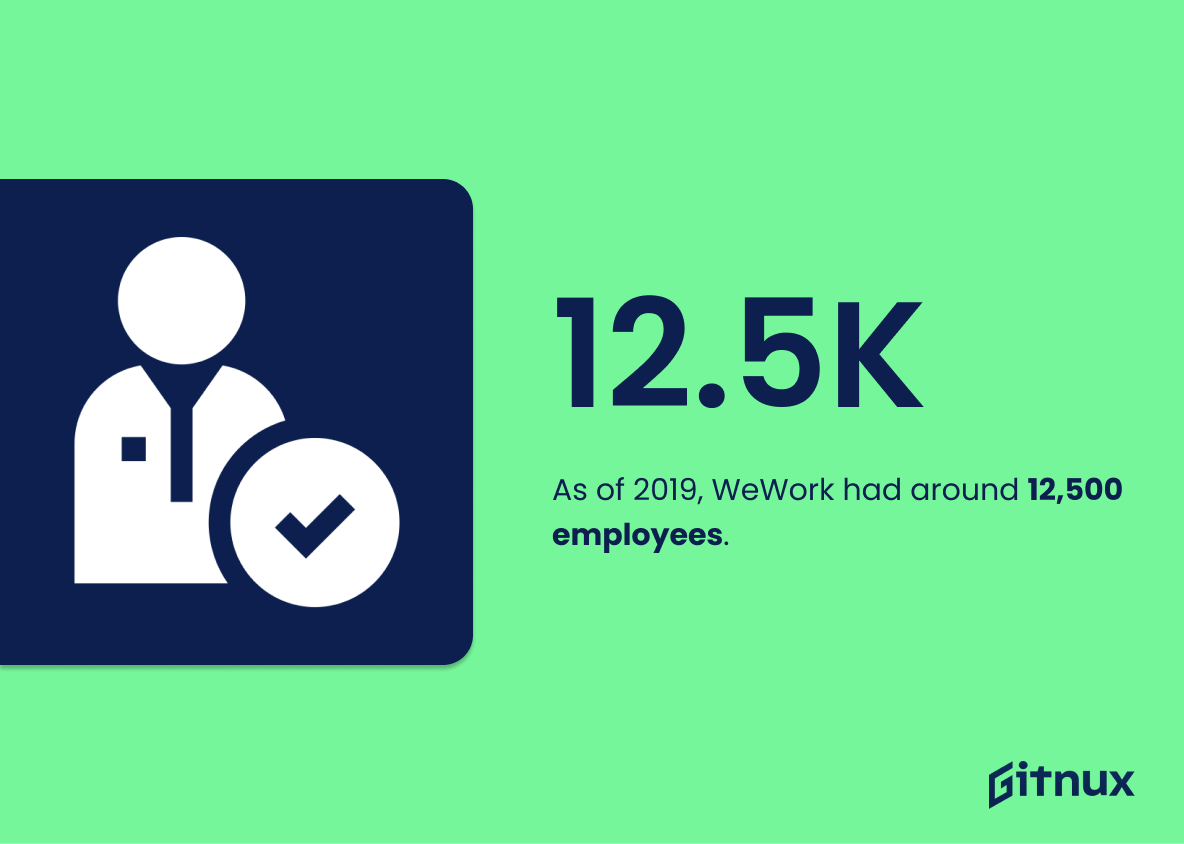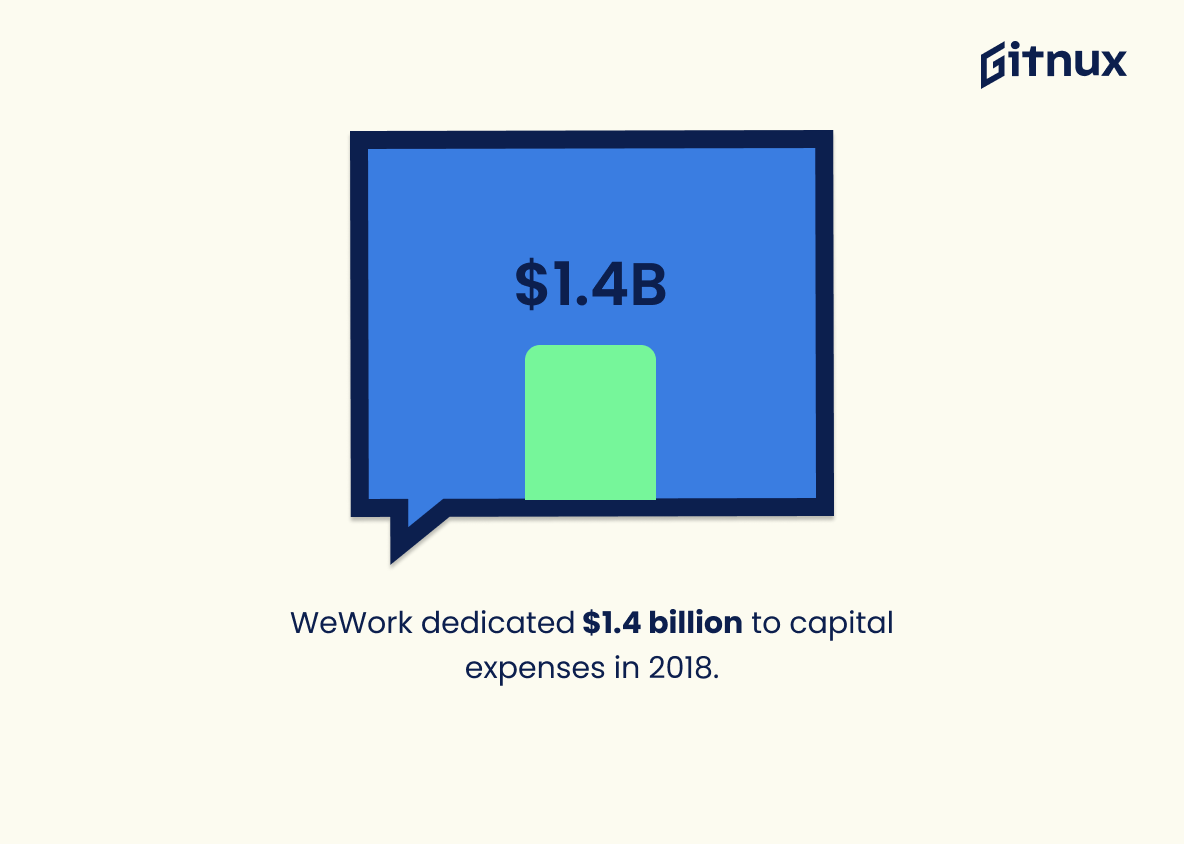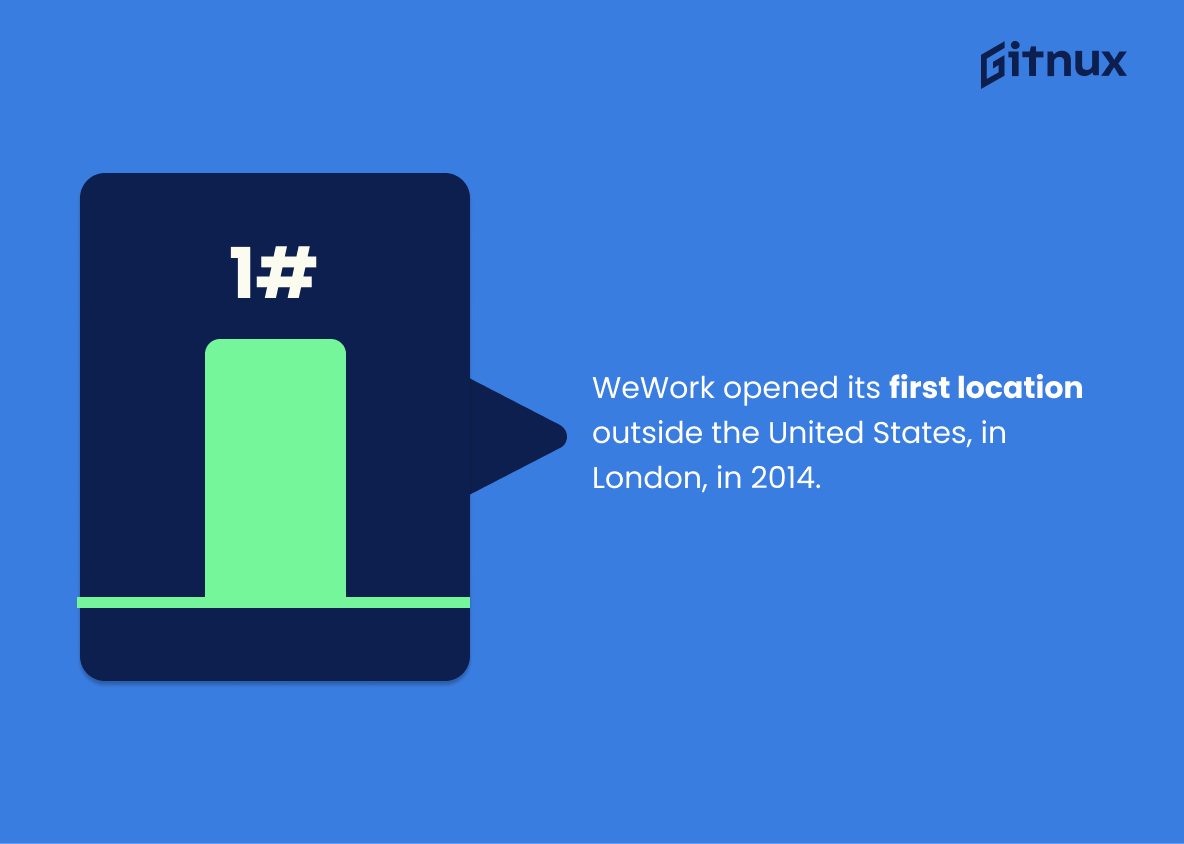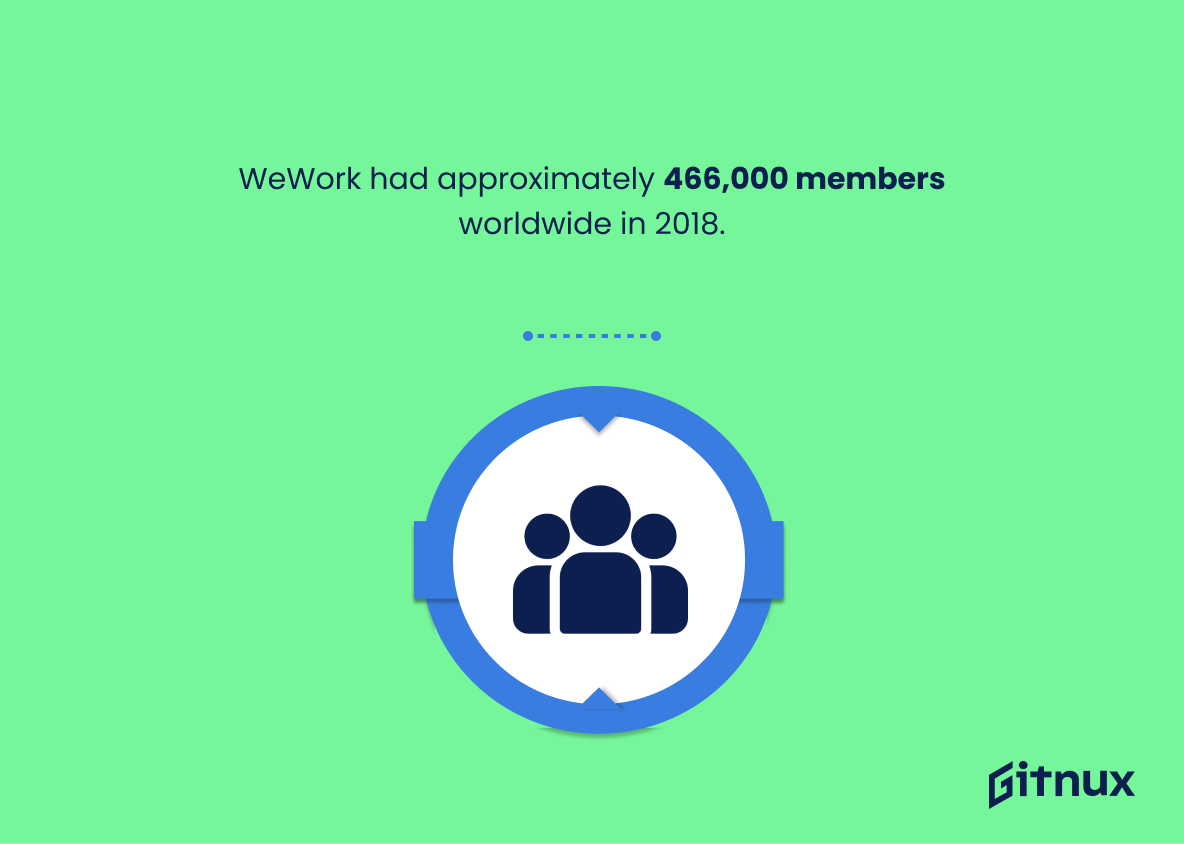WeWork is a global leader in the shared workspace industry, with over 800 office locations across 32 countries and 662,000+ members. Last valued at $47 billion, WeCompany (the parent organization of WeWork) reported a net loss of $1.9 billion in 2018 and was in arrears of $18.7 billion by year-end 2019. After its failed IPO attempt late last year, Softbank invested around $1.5 billion into the company to help keep it afloat while they worked on restructuring their business model for success going forward into 2021 and beyond. In this blog post we will explore some interesting statistics about WeWork’s growth since 2014 as well as their current financial standing today – from revenue per member to occupancy rate percentages worldwide – so that you can get an up close look at one of the world’s most successful coworking companies.
Wework Statistics Overview
WeWork was in arrears of $18.7 billion in 2019 by year-end.
This statistic is a stark reminder of the financial struggles that WeWork faced in 2019. It highlights the magnitude of the company’s debt and the challenges it faced in trying to stay afloat. It serves as a cautionary tale for other companies, demonstrating the importance of financial responsibility and sound decision-making.
In late 2019, Softbank invested around $1.5 billion into WeWork after the company’s failed IPO.
This statistic is a testament to the impact that WeWork had on the business world. It shows that even after the company’s failed IPO, Softbank was willing to invest a significant amount of money into the company. This speaks to the potential that WeWork had, and the potential that investors saw in the company. It also shows the power of Softbank’s influence in the business world, and how it can help companies even in difficult times.
WeWork has over 800 office locations in 32 countries.
This statistic speaks volumes about the reach and influence of WeWork. It demonstrates the company’s ability to expand its operations to a global scale, providing its services to a wide range of customers in different countries. This impressive feat is a testament to WeWork’s success and growth, and is a key factor in why it has become such a popular and successful business.
As of late 2019, WeWork had 662,000+ members.
This statistic is a testament to the success of WeWork, showing that the company has grown significantly since its inception. It demonstrates the widespread appeal of WeWork’s services, with over 662,000 members taking advantage of its offerings. This statistic is a powerful indicator of WeWork’s success and is an important part of understanding the company’s overall performance.
WeWork announced it had 813,000+ desks for rent globally as of late 2019.
This statistic is a testament to the sheer size and scope of WeWork’s operations. It demonstrates the company’s ability to provide workspace solutions to a vast number of customers across the globe. This statistic is a powerful indicator of WeWork’s success and its potential for continued growth.
In January 2021, WeWork disclosed that the occupancy rate of its workspace was only 47%.
This statistic is a telling indication of the current state of WeWork. It reveals that the company is struggling to maintain its occupancy rate, which could be a sign of financial difficulty. This could be a cause for concern for investors and customers alike, as it could mean that WeWork is not able to provide the same level of service and quality that it once did. Furthermore, this statistic could be a sign of a larger trend in the industry, as other companies may be facing similar issues.
WeWork’s revenue fell to $811 million in the second quarter of 2020.
This statistic is a telling indication of the impact of the pandemic on WeWork’s business. It shows that the company has experienced a significant drop in revenue, which could have a long-term effect on its operations and future prospects. This is an important piece of information for anyone interested in the company and its performance, as it provides insight into how the pandemic has affected WeWork’s bottom line.
In 2019, the average length of a WeWork location lease was 15 years.
The fact that the average length of a WeWork location lease was 15 years in 2019 speaks volumes about the company’s commitment to long-term success. It shows that WeWork is confident in its ability to provide a quality service and that customers are willing to make a long-term investment in the company. This statistic is a testament to the trust that WeWork has earned from its customers and is a key indicator of the company’s success.
WeWork’s annual revenue per member was $6,928 in 2019.
The significance of ‘WeWork’s annual revenue per member being $6,928 in 2019’ is undeniable. It speaks volumes about the success of the company and its ability to generate income from its members. This figure is a testament to WeWork’s ability to provide a valuable service to its members and to create a profitable business model. It also serves as a reminder of the importance of providing quality services to customers in order to maximize revenue.
WeWork reached $1.8 billion in revenue in 2018, doubling its 2017 revenue.
This statistic is a testament to the success of WeWork, showing that the company has experienced tremendous growth in a short period of time. It demonstrates that WeWork is a viable business model and has the potential to become a major player in the industry. This is an impressive feat and one that should be celebrated.
As of 2019, WeWork had around 12,500 employees.
This statistic is a telling indication of the size and scope of WeWork’s operations. It demonstrates the company’s impressive growth over the years, as well as its ability to attract and retain a large number of employees. This statistic is also important in understanding the impact WeWork has had on the economy, as it has created thousands of jobs and contributed to the growth of many local economies.
WeWork dedicated $1.4 billion to capital expenses in 2018.
This statistic is a telling indication of the magnitude of Wework’s commitment to capital expenses in 2018. It speaks to the company’s dedication to investing in its infrastructure and operations, and serves as a testament to its ambition and ambition to grow. It is a clear sign that Wework is serious about its future and is willing to invest heavily in order to ensure its success.
In 2018, almost 30% of WeWork’s revenue came from international markets.
This statistic is a testament to WeWork’s global reach and success. It shows that the company has been able to expand its operations beyond its home market and tap into international markets, which is a major accomplishment. This statistic is also important because it demonstrates WeWork’s ability to generate revenue from a variety of sources, which is essential for any successful business.
WeWork opened its first location outside the United States, in London, in 2014.
This statistic is a testament to the success of WeWork and its ability to expand beyond the United States. It demonstrates the company’s ambition and commitment to global growth, and highlights the potential for further expansion in the future. It also shows that WeWork is a leader in the coworking space, and is capable of adapting to different markets and cultures. This statistic is an important part of the story of WeWork’s success and is a key factor in understanding the company’s success.
WeWork had approximately 466,000 members worldwide in 2018.
This statistic is a testament to the success of WeWork’s business model. It shows that the company has been able to attract a large number of members to its platform, indicating that it has been able to provide a valuable service to its customers. This statistic is also a sign of WeWork’s potential for growth, as it suggests that the company has the capacity to expand its customer base even further.
In 2019, WeWork surpassed JP Morgan as the largest office tenant in London, with 3.4 million square feet of office space.
This statistic is a testament to the success of WeWork in London, demonstrating that the company has become a major player in the city’s office space market. It highlights the company’s ability to expand rapidly and become a major player in the industry, and serves as a reminder of the potential of WeWork to continue to grow and become an even bigger presence in the city.
WeWork’s enterprise customers made up 40% of their total memberships in 2019.
This statistic is a testament to the success of WeWork’s enterprise customer base, demonstrating that they have been able to capture a significant portion of the market. It is indicative of the company’s ability to attract and retain large corporate customers, which is a key factor in their continued growth and success.
Conclusion
WeWork has experienced a rollercoaster of success and failure in recent years. Despite its high valuation, the company reported a net loss of $1.9 billion in 2018 and was in arrears of $18.7 billion by year-end 2019. Softbank invested around $1.5 billion into WeWork after their failed IPO attempt late last year, but occupancy rate dropped to 47% as recently as January 2021 with revenue falling to only 811 million for Q2 2020 – far below expectations from previous years when they doubled 2017’s revenue at 1.8 Billion USD and had 46 Million square feet across 118 cities worldwide with 12500 employees on board servicing 662000+ memberships globally while dedicating 1.4Billion USD towards capital expenses alone that same year; 40% coming from enterprise customers alone. With over 800 office locations spread out across 32 countries since 2014 (when they opened their first location outside the US) it is clear that WeWork still holds potential despite current setbacks due to COVID-19 pandemic restrictions which have affected many businesses alike this past year or so
References
0. – https://www.techcrunch.com
1. – https://www.qz.com
2. – https://www.commercialobserver.com
3. – https://www.therealdeal.com
4. – https://www.www.forbes.com
5. – https://www.www.wework.com
6. – https://www.www.cnbc.com
7. – https://www.www.businessinsider.com
ZipDo, cited June 2023: Wework Statistics
